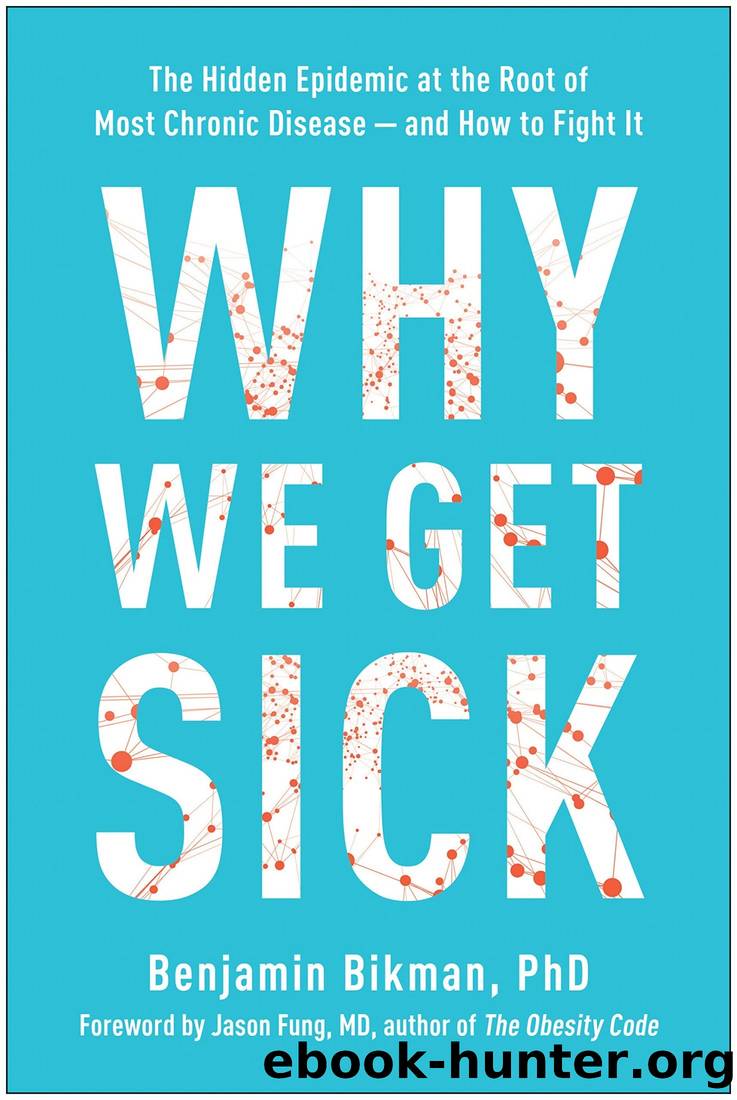Why We Get Sick: The Hidden Epidemic at the Root of Most Chronic Disease and How to Fight It by Benjamin Bikman

Author:Benjamin Bikman
Language: eng
Format: mobi, epub
Tags: Health
Publisher: BenBella Books
Published: 2020-05-05T15:23:17+00:00
Get Moving: The Importance of Physical Activity 139
COOL DOWN
Could our comfortable thermoneutral environments be part of our metabolic decline? Frequent exposure to cold is perhaps the most unexpected (and unpleasant) thing you can do to improve and control your insulin levels.
Before diving into the evidence suggesting cold exposure improves insulin sensitivity, I need to introduce you to a type of fat you’ve possibly never heard of: brown fat. Most of the fat we have on our bodies is “white fat,” called “white adipose tissue” or WAT—the tissue itself is quite white, partly due to the lack of mitochondria within the fat cells (mitochondria have a brownish-red color). However, there are distinct small pockets of fat in the body where the fat cells are not only much smaller, but also very richly brown; they’re loaded with mitochondria.
Mitochondria are important “energy centers,” making fuel for the cell by breaking down glucose and fats. However, the mitochondria in brown adipose tissue (BAT) behave a little differently from most. Generally, mitochondria will only burn nutrients (that is, carbs or fats) dependent on the energy needs of the cell; thus, the cell’s energy demand determines, or is coupled to, cell energy production. Makes sense. However, BAT mitochondria are enriched with uncoupling proteins; as the name suggests, these proteins allow the mitochondria to burn nutrients and, rather than giving the cell energy, they simply produce heat. So white fat wants to store fat and brown fat wants to burn fat. In fact, when activated, BAT has a metabolic rate comparable to muscle and uses as much glucose as muscle cells.17
This is where the cold comes in; BAT becomes activated when our skin gets cold.
The “magic temperature” against the skin appears to be about 64.4°F (18°C)—at this temperature, BAT becomes active in men and women and starts burning glucose in an effort to warm the body.18 This temperature is unique because, for most people, it requires the body to work a little harder to stay warm, but not work too hard. The muscles won’t shiver because the BAT is able to activate and generate sufficient heat. (In fact, it’s this process that explains why babies don’t shiver—
they have a lot of BAT that keeps them warm.) However, when the
140
Why We Get Sick
temperature drops below this point, the body begins shivering, which is a more dramatic (and effective) method of generating heat to maintain internal body temperature.
Relevant to both of these processes (shivering and nonshivering thermogenesis) is the fuel—glucose. In both processes, glucose is being consumed more rapidly than normal. Of course, the upside to this is that insulin levels drop as glucose is used. Partly because of increased glucose use by shivering muscle and activated BAT, insulin secretion drops quickly in the cold.19
With cold exposure, a very interesting additional change occurs in fat tissue that influences insulin sensitivity. Fat tissue is capable of producing hormones, termed adipokines, that affect myriad metabolic processes. One of the beneficial hormones that increases insulin sensitivity is adiponectin, released from WAT. Interestingly, adiponectin levels rise with cold exposure (two hours).
Download
Why We Get Sick: The Hidden Epidemic at the Root of Most Chronic Disease and How to Fight It by Benjamin Bikman.epub
This site does not store any files on its server. We only index and link to content provided by other sites. Please contact the content providers to delete copyright contents if any and email us, we'll remove relevant links or contents immediately.
Men In Love by Nancy Friday(5095)
Everything Happens for a Reason by Kate Bowler(4601)
The Immortal Life of Henrietta Lacks by Rebecca Skloot(4437)
Why We Sleep by Matthew Walker(4303)
The Sports Rules Book by Human Kinetics(4197)
Not a Diet Book by James Smith(3286)
The Emperor of All Maladies: A Biography of Cancer by Siddhartha Mukherjee(3004)
Sapiens and Homo Deus by Yuval Noah Harari(2932)
Day by Elie Wiesel(2679)
Angels in America by Tony Kushner(2435)
A Burst of Light by Audre Lorde(2391)
Endless Forms Most Beautiful by Sean B. Carroll(2387)
Hashimoto's Protocol by Izabella Wentz PharmD(2229)
Dirty Genes by Ben Lynch(2218)
Reservoir 13 by Jon McGregor(2200)
And the Band Played On by Randy Shilts(2066)
Wonder by R J Palacio(2039)
The Immune System Recovery Plan by Susan Blum(1994)
Stretching to Stay Young by Jessica Matthews(1963)
